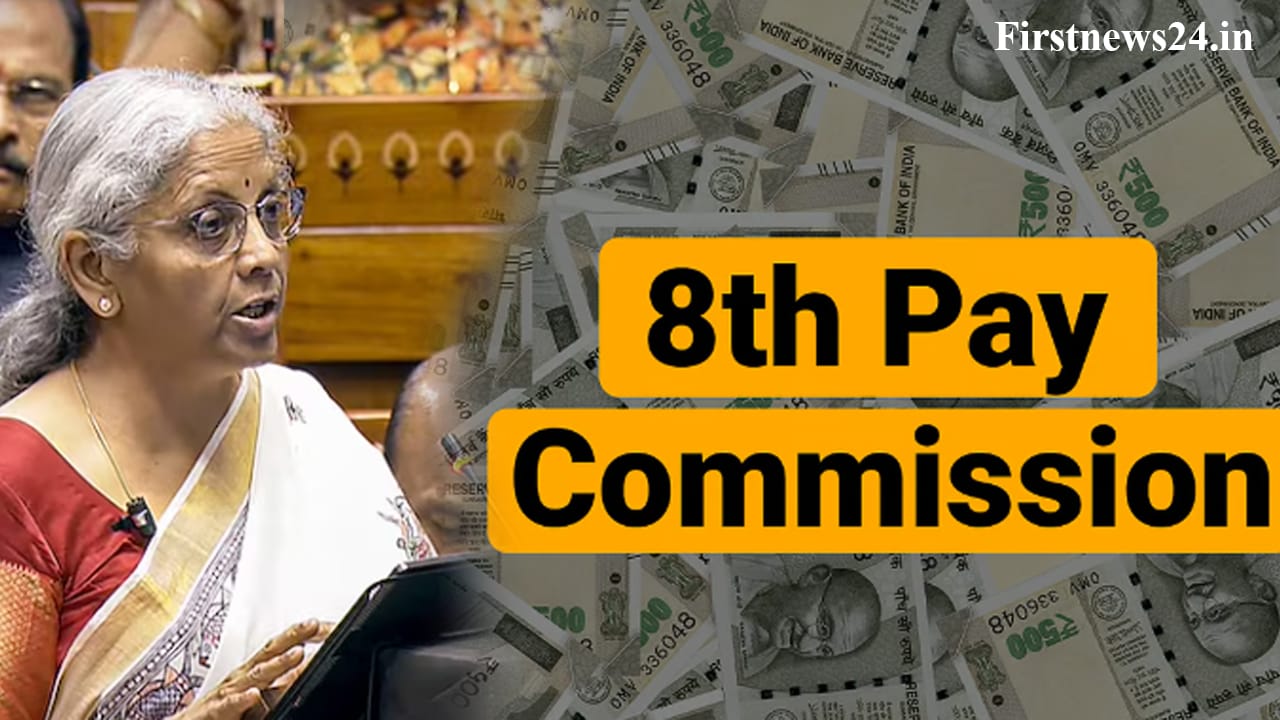The Central Government has officially greenlit the 8th Pay Commission, setting the stage for a significant overhaul of salaries and pensions for lakhs of government employees and retirees. The much-anticipated implementation is slated for January 1, 2026, bringing a wave of financial reforms aimed at improving compensation amid inflation and rising living costs.
Let’s take a closer look at what the 8th Pay Commission has in store.
What’s Changing: Key Highlights
-
Effective Date: January 1, 2026
-
Expected Fitment Factor: 2.28 to 3.00
-
Minimum Salary Hike: From ₹18,000 to around ₹41,000
-
Dearness Allowance (DA): Likely to touch 70% and be merged into basic pay
-
Pension Hike: Minimum pension may rise from ₹9,000 to ₹20,500
-
Coverage: Over 48.6 lakh employees and 67.8 lakh pensioners
Why the 8th Pay Commission Matters
The move follows a decade after the 7th Pay Commission, which was rolled out in 2016 and is set to conclude in December 2025. Pay Commissions typically come every ten years to ensure government compensation remains competitive and in line with the economic landscape.
The Union Cabinet officially constituted the new commission on January 16, 2025, mandating it to focus not just on salary and pension revisions, but also on comprehensive welfare and structural reforms.
Fitment Factor: A Bigger Multiplier, A Better Paycheck
A major talking point is the Fitment Factor, a crucial multiplier used to calculate the revised basic pay. The expected increase from the current 2.57 (under 7th CPC) to 3.00 could lead to a minimum basic salary of approximately ₹21,600, up from ₹18,000.
Here’s a quick comparison of fitment factors over time:
| Pay Commission | Fitment Factor | Min Basic Pay |
|---|---|---|
| 6th CPC | 1.86 | ₹7,000 |
| 7th CPC | 2.57 | ₹18,000 |
| 8th CPC (Expected) | 3.00 | ₹21,600 |
Salary Structure: What the New Pay Means
Under the revised salary system, employees’ pay will include:
-
Basic Pay: Based on the revised fitment factor
-
Dearness Allowance (DA): Projected at 70%, to be merged with basic pay
-
House Rent Allowance (HRA): Ranging from 10–27%, depending on city tier
-
Travel Allowance (TA): As per post and location
-
Gross Salary: Total of all components minus standard deductions
Pensioners to Benefit Too
The commission isn’t just about those in service. Pensioners can expect a substantial raise, with the minimum pension likely to increase to ₹20,500, based on the revised fitment calculations. This change is expected to provide much-needed financial security to senior citizens who’ve served in various capacities over the years.
Timeline and Implementation Process
The process has followed the traditional structure — with the commission being formed roughly 18 months ahead of implementation, allowing ample time for data gathering, consultation, and recommendations. The final structure will be rolled out from January 1, 2026.
Salary Calculator Guide: Estimate Your New Salary
To help employees estimate their upcoming pay, here’s a step-by-step example using a fitment factor of 3.00:
Step 1: Start with your existing 7th CPC basic pay
Step 2: Multiply by 3.00
Step 3: Add DA (assume 50% of new basic pay)
Step 4: Add HRA based on city (10–27%)
Step 5: Include TA based on location
Step 6: Subtract standard deductions to get net gross salary
Expected Pay Matrix Table (8th CPC)
| Pay Matrix Level | 7th CPC Basic | 8th CPC Expected |
|---|---|---|
| Level 1 | ₹18,000 | ₹21,600 |
| Level 4 | ₹25,500 | ₹30,600 |
| Level 7 | ₹44,900 | ₹53,880 |
| Level 10 | ₹56,100 | ₹67,320 |
| Level 13 | ₹1,23,100 | ₹1,47,720 |
| Level 18 | ₹2.50 lakh | ₹3 lakh |
Full matrix includes all levels from 1 to 18
Where to Track Official Updates
To stay informed about official announcements, visit: https://dopt.gov.in
Final Thoughts
The 8th Pay Commission signals a welcome change for central government employees and retirees, aiming to bridge the gap between wages and the rising cost of living. With an increased fitment factor and rationalized allowances, this is more than just a routine revision — it’s a step toward holistic financial well-being for lakhs across India’s public sector.
As 2026 draws near, employees can begin preparing for a better-aligned salary structure that reflects both their service and the evolving economic realities of the country.
